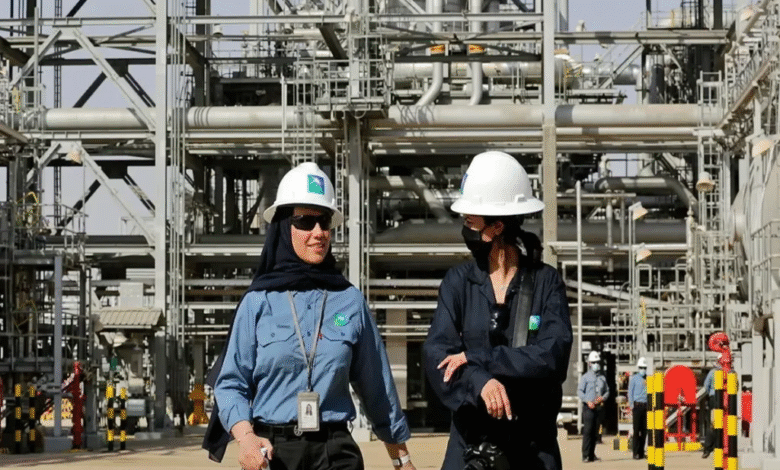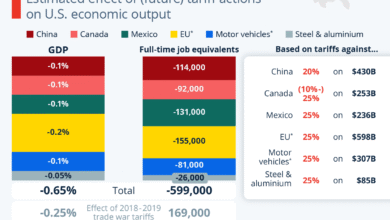Aramco Profit Decline: 5% Drop in First Quarter Earnings

In the first quarter of 2024, Saudi Aramco reported a notable profit decline, marking a 5% decrease in net income compared to the previous year. This downturn, resulting in earnings of $26 billion—down from $27.3 billion—reflects the significant impact of fluctuating crude oil prices and a slowdown in global oil demand. Analysts had expected even lower figures, with projections at $25.3 billion, indicating that Aramco’s performance slightly outpaced these forecasts. However, the decline in free cash flow to $19.2 billion from $22.8 billion underscores the ongoing challenges the oil giant faces amid pressures on production and pricing. As Aramco navigates this complex landscape, the implications for its future earnings and dividend payouts loom large, creating a ripple effect throughout the energy market and investor sentiment.
The decline in profits reported by Saudi Aramco this quarter has raised alarms in the oil industry, as the energy giant grapples with a tougher economic environment. Weakness in crude prices and a diminishing appetite for oil globally have been key factors contributing to this downturn in financial performance. With net earnings falling from $27.3 billion to $26 billion year-over-year, and free cash flow dropping significantly, the company’s ability to sustain its impressive dividends may come under scrutiny. This situation underscores the precarious nature of the crude oil market, where external pressures can dramatically influence revenue streams for even the most established players. Observers are keenly watching how Aramco will adapt to these challenges in the face of shifting oil demand dynamics.
Saudi Aramco Profit Decline Explained
Saudi Aramco recently reported a notable 5% decline in its net income during the first quarter of 2024, revealing a profit of $26 billion compared to $27.3 billion in the first quarter of 2023. This decline is significantly tied to the ongoing instability in crude oil prices, which have been affected by various market factors, including fluctuating global oil demand. The lower earnings are not just a reflection of Aramco’s operations but also indicative of the broader challenges facing the global oil market as trade tensions impact consumption patterns.
The decrease in Aramco’s profit highlights operational challenges linked to both lower production levels and diminishing crude prices, which have struggled to recover. Analysts had anticipated a profit of $25.3 billion, which Aramco managed to surpass slightly, yet the decline signals ongoing financial pressures within the company. The lack of a robust rebound in crude oil prices combined with a noticeable dip in global oil demand complicates future forecasts for Aramco’s earnings and could lead to further strategic adjustments in the months ahead.
Impact of Oil Prices on Saudi Aramco’s Earnings
The relationship between oil prices and Saudi Aramco’s earnings is evident in the company’s financial results for the first quarter of 2024. With crude oil prices remaining under pressure, Aramco’s free cash flow also saw a significant decline, dropping from $22.8 billion in Q1 2023 to $19.2 billion this year. This decline echoes the challenges encountered in the oil sector, where both supply dynamics and geopolitical factors affect pricing, thus impacting profitability across the board.
Furthermore, with ongoing concerns regarding global oil demand, the company’s financial health and future pricing strategies may come under scrutiny. As crude oil prices fluctuate due to geopolitical tensions, shifts in production strategies, and economic pressures from various regions, Aramco’s earnings could continue to face volatility. Understanding this highly interconnected market environment is crucial for gauging future earnings as the company adapts to these persistent changes in the industry.
Analyzing Saudi Aramco’s Free Cash Flow Trends
Saudi Aramco’s free cash flow is a critical indicator of its financial health, and the reported drop to $19.2 billion in Q1 2024 raises important questions about its future performance. This decline from $22.8 billion reflects not only oil price impacts but also increased operational costs and production decisions made in response to fluctuating global oil demand. High levels of free cash flow are essential for sustaining dividends and funding future projects, and without improvements in oil prices, Aramco might find itself navigating turbulent financial waters.
The company’s commitment to maintaining cash flow from operating activities, which totaled $31.7 billion compared to $33.6 billion the previous year, showcases its operational resilience amid external challenges. However, the decrease in free cash flow underscores the need for strategic revisions that can better align with market conditions. As global oil demand continues to evolve, Aramco’s ability to balance operational efficiency with market realities will be crucial in safeguarding its financial stability.
Global Oil Demand Trends and Their Effects
The current landscape of global oil demand presents complex challenges for Saudi Aramco and the overall oil market. With increasing trade pressures and shifting consumer behavior, the demand for oil has started to wane, adversely affecting crude oil prices. Therefore, the performance of Saudi Aramco is closely tied to the ebb and flow of international demand, which influences not only revenue but also operational strategies moving forward.
In analyzing trends, it is clear that lower global oil demand can lead to significant price volatility, which in turn impacts profits for oil giants like Saudi Aramco. The company must adapt to global market shifts by refining its production strategies and potentially altering its pricing to remain competitive. Understanding these dynamics is crucial, as the interplay between supply, demand, and pricing will directly define the future profitability of Saudi Aramco in a changing economic environment.
Projected Earnings for Saudi Aramco Amid Market Pressures
Looking ahead, analysts are cautiously projecting earnings for Saudi Aramco amidst the backdrop of erratic oil prices and flagging global demand. The company’s net income fell slightly above expectations in Q1 2024, but concerns remain regarding the sustainability of such performance in subsequent quarters. Ensuring consistent earnings will depend on Aramco’s ability to navigate market uncertainties while strategically managing production levels to adapt to demand forecasts.
As the global economy grapples with numerous challenges, fluctuations in crude oil prices will likely continue to influence Aramco’s financial projections. Addressing potential risks associated with the oil market, the company may consider diversifying its revenue streams or investing in alternative energy sources to buffer against downturns. The foresight to adjust strategic priorities in response to external market conditions may play a pivotal role in securing Aramco’s long-term profitability.
Dividend Strategy Changes at Saudi Aramco
In light of recent profit declines, Saudi Aramco has announced significant changes to its dividend strategy, reducing its performance-linked payout drastically for Q4 2024. The decision to decrease dividends from $10.2 billion to $200 million reflects a proactive approach to preserve capital following the dip in earnings caused by weaker crude prices and global demand challenges. Such fiscal discipline underscores the company’s commitment to maintaining financial health in volatile market conditions.
However, while the performance-linked dividend might decrease, Aramco’s base dividend increased by 4.2% year-over-year to $21.1 billion for Q1 2024. This move signals that, despite facing pressure, the organization is still committed to rewarding shareholders while also positioning itself for future growth. Keeping a balance between shareholder returns and financial sustainability will be critical to Aramco’s long-term success, especially as global oil demand continues to evolve.
Understanding the Saudi Oil Market Landscape
The Saudi oil market, characterized by its substantial influence on global oil dynamics, encapsulates the intricacies of supply and demand that frequently shift with geopolitical developments and economic fluctuations. In 2024, the challenges posed by declining crude oil prices highlight the delicate balance that Saudi Arabia must strike to maintain its status as a leading oil producer. Understanding these market dynamics is vital not only for investors but also for policymakers aiming to mitigate risks associated with instability in oil prices.
Examining the broader context allows for a deeper appreciation of the strategies that Saudi Aramco may deploy in responding to changing market conditions. The company’s robust approach toward operational adjustments and its investment in innovation can potentially offset some adverse effects faced due to lower oil prices. As the global demand for oil shifts, establishing resilient operational practices in the face of adversity will determine Saudi Aramco’s resilience in a competitive marketplace.
Future Prospects for Saudi Aramco Amid Challenges
As Saudi Aramco navigates the financial terrain shaped by fluctuating crude oil prices and declining global demand, the company’s future prospects will largely depend on its strategic adaptability. The recent 5% decline in profits signals the necessity for shifts in operational tactics and may prompt Aramco to reevaluate its position within the global oil landscape. Future growth will require a nuanced understanding of market trends and the implications of geopolitical factors affecting oil supply.
Looking ahead, Saudi Aramco’s ability to tailor its production to meet dynamic global demand and invest in innovative solutions will be paramount in safeguarding its earnings. Stakeholders will be closely assessing the company’s response to these evolving conditions and whether it can reposition effectively to leverage potential opportunities in a shifting energy landscape. Balancing short-term challenges with long-term ambitions will be critical for Aramco as it strives to maintain profitability and market leadership.
The Role of Saudi Aramco in Global Energy Transition
Amid the backdrop of fluctuating oil prices and declining global demand, Saudi Aramco is also increasingly facing calls to diversify its operations and adapt to the global energy transition. The company’s vast resources and expertise position it uniquely to contribute to sustainable energy initiatives while maintaining its core oil production. As global attention shifts toward renewable energy, the onus lies upon Aramco to balance its traditional oil operations with investments in greener technologies.
The potential risks associated with a prolonged reliance on oil can drive Saudi Aramco to explore partnerships and innovations that align with global sustainability goals. As the energy landscape evolves, Aramco’s strategy will likely evolve to embrace a broader spectrum of energy solutions. Successfully navigating this transition could solidify Aramco’s position not only as a leader in oil production but also as an influential player in the shift toward renewable energy sources.
Frequently Asked Questions
What caused the decline in Saudi Aramco’s profit in the first quarter of 2024?
The decline in Saudi Aramco’s profit for the first quarter of 2024 can be attributed to lower crude oil prices and a reduction in global oil demand. The company’s net income fell 5% year-over-year to $26 billion, down from $27.3 billion as trade pressures continue to impact market conditions.
How much did Saudi Aramco earn in the first quarter of 2024 compared to the previous year?
In the first quarter of 2024, Saudi Aramco reported earnings of $26 billion, which represents a 5% decrease from $27.3 billion earned in the same period last year. Despite this decline, the earnings slightly surpassed analyst expectations of $25.3 billion.
What impact do crude oil prices have on Saudi Aramco’s profit?
Crude oil prices have a significant impact on Saudi Aramco’s profit margins. The recent 5% decline in net income for the first quarter of 2024 is primarily due to weaker oil prices, which directly affect the company’s revenue-generating capabilities and overall financial performance.
What financial measures is Saudi Aramco taking in response to the profit decline?
In response to the profit decline, Saudi Aramco has significantly cut its performance-linked dividend payout for the fourth quarter of 2024 to $200 million, a drastic reduction from $10.2 billion previously. This strategic move aims to bolster financial stability amid the ongoing pressure from declining oil prices and global demand.
What are the projections for Saudi Aramco’s earnings moving forward amid global oil demand changes?
Given the ongoing challenges in global oil demand, the projections for Saudi Aramco’s earnings indicate continued pressure on profitability. For the first quarter of 2024, the net income reflects these pressures, which are expected to persist unless there is a recovery in crude oil prices and market conditions improve.
How does the decline in global oil demand affect Saudi Aramco’s financial health?
The decline in global oil demand directly affects Saudi Aramco’s financial health by reducing revenue from crude oil sales, leading to lower net income and cash flow. For instance, in the first quarter of 2024, the company’s free cash flow fell to $19.2 billion, highlighting the adverse impact of diminishing demand on its financial performance.
What was the free cash flow for Saudi Aramco in the first quarter of 2024 compared to the previous year?
In the first quarter of 2024, Saudi Aramco’s free cash flow was $19.2 billion, a decrease from $22.8 billion in the same quarter of the previous year. This decline reflects the challenges posed by lower crude prices and reduced global oil demand.
| Key Point | Details |
|---|---|
| Profit Decline | Saudi Aramco reported a 5% decline in its first-quarter profit, amounting to $26 billion compared to $27.3 billion a year prior. |
| Analyst Expectations | The profit slightly exceeded analyst expectations of $25.3 billion. |
| Free Cash Flow | Free cash flow for Q1 was $19.2 billion, down from $22.8 billion in the same period last year. |
| Operating Activities | Cash flow from operating activities was $31.7 billion, down from $33.6 billion the previous year. |
| Dividend Cuts | The company announced a significant cut in performance-linked dividends for Q4 2024 to $200 million from $10.2 billion. |
| Base Dividend Increase | Despite cuts in performance-linked dividends, the base dividend for Q1 increased by 4.2% to $21.1 billion. |
Summary
The recent Aramco profit decline highlights the tough landscape within which the Saudi oil giant operates, driven primarily by declining crude prices and sluggish global demand. With a reported 5% decrease in net income year-over-year, Aramco’s performance underscores the challenges posed by fluctuating market conditions and trade pressures. As the company navigates these financial waters, its strategic decisions around dividends and cash flow will be pivotal in maintaining investor confidence.




